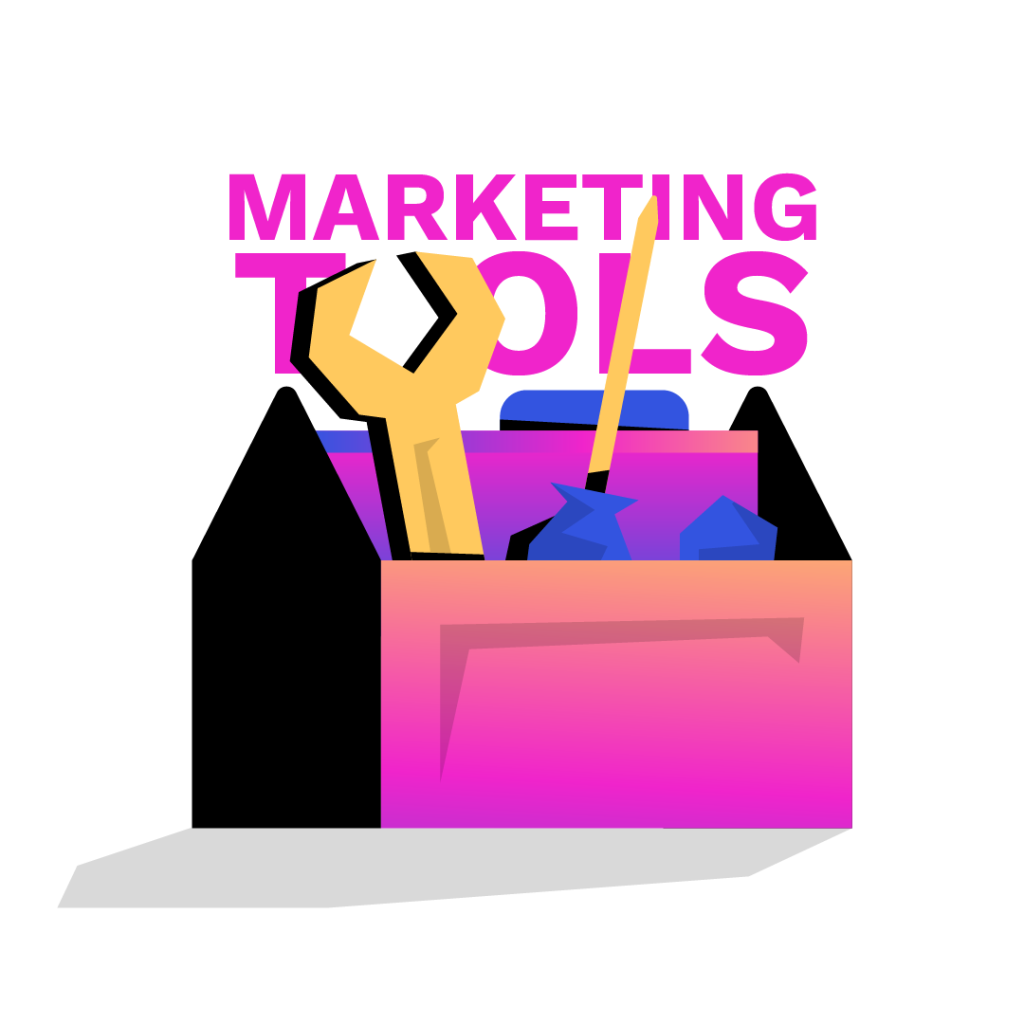
Every company needs clients. Clients are one of the main factors for measuring success and fostering growth. It is not possible to acquire customers within a few hours; it takes time, patience and good work to arouse interest of possible clients. Once you manage to arouse this interest and the person takes a step towards you, for example by subscribing to your newsletter, you’ve generated a “LEAD”. Digital marketing lead generation is crucial for your business to build your customer base and ultimately increase revenue. With the right digital marketing strategy, you can reach possible leads very easily – but so can other businesses. Nowadays, every person constantly sees a huge number of ads and marketing campaigns, online and offline.
Therefore, for your business to be successful, it is crucial to have proper digital marketing lead generation strategies.
What is digital marketing lead generation?
Digital marketing lead generation is the process of identifying and attracting potential customers, also referred to as “leads”, through online channels and online marketing activities. The ultimate goal of each lead generation strategy is to not only generate leads, but also nurture them to eventually convert them into paying customers.
The different types of leads
After answering the question “What is lead generation in digital marketing?”, it is important to understand that there are different types of leads, as this will help you tailor your lead generation efforts.
It is a common practice to separate leads into cold leads, warm leads and hot leads:
- Cold leads have shown no or very little interest in your product or service and have typically not been specifically targeted.
- Warm leads have already shown some interest, for example by engaging with your content, however they may need further nurturing.
- Hot leads have shown strong interest and are very likely ready to make a purchase decision and convert into customers soon.
Some other common categories are:
- Marketing Qualified Leads (MQL): You have generated those leads based on your marketing efforts. They have shown potential interest by filling out a form, subscribing to your newsletter, engaging with your content on social media, or by taking a similar action.
- Sales Qualified Leads (SQL): To qualify as a sales lead, those leads need to be indentified by the sales team as highly likely to make a purchase. They have shown a higher level of interest than the MQL.
- Inbound Leads: Leads that you generate naturally, for example through search engine optimization or content marketing, are referred to as inbound leads.
- Outbound Leads: Leads generated by actively pursuing them by your marketing or sales team, using methods like email outreach or cold calling.
How to build trust with potential customers

By using the word “lead”, it is easy to forget that with this term, we are referring to real people. People whom you want to win as customers, but who also wonder if they can trust you. Therefore it is crucial that in the first step, you make sure to prove and convince people that they can trust you and your business.
Here are some strategies you can use for building trust in your business:
1. Show competence and expertise
Always make sure to demonstrate that you are skilled in your field. Provide valuable, accurate information on social media, your newsletter and on the website. Make sure that there are no mistakes or wrong information, as this will make potential leads lose their trust in your business.
This also includes that you should put work into your website, making sure that it is well-designed, appealing and provides all the necessary information in a clearly structured way.
2. Communicate transparently
Transparent communication grows trust, as it shows that you have nothing to hide. Be honest, open and clear about the product or service you offer.
Always tell the truth – if something goes wrong, take responsibility and admit that you made a mistake instead of trying to hide it. Openly work towards a solution. Avoid overly technical language in your communication and make sure that the information you provide can be understood by your target audience.
This also includes that you should clearly outline your policies regarding cancellations, returns, warranties and guarantees.
3. Meet and exceed expectations
Your goal should always be to not only meet the expectations of potential leads, but also to exceed them. Examples for this are:
- Make sure that the landing page a user lands on after clicking on your ad is directly related to the message the ad delivers. Don’t disappoint the user by providing misleading content just to catch his attention.
- Deliver exceptional customer service. Always be friendly, try to be as fast and helpful as possible and be forthright in your responses.
In order to not disappoint, you should set realistic expectations from the beginning, being open about possible limitations of your product or service.
4. Provide proof
Share reviews or testimonials in order to showcase satisfied customers. If you receive negative feedback, respond to it professionally and openly work towards a solution. Also provide possibilities for customers to give feedback, as this shows that you value their opinion and continously work towards improvement.
Collaborating with influencers on social media can also have a positive impact on the trustworthiness of your business. However, it is crucial to choose those influencers with care.
Showcase relevant awards or certifications on your website. These help you to demonstrate credibility.
5. Engage and build relationships
Engage and interact as much as possible with your audience. An easy way to do so is by using social media and newsletters. This helps you to foster a sense of community.
6. Follow privacy and data rules
Be transparent on how you handle the data of customers and what security measures you take in order to protect it.
How can I generate leads with my digital marketing?

The question “What is lead generation?” is typically quickly followed by “How can I generate leads with my digital marketing?”
By combining various digital marketing techniques, optimizing your online appearance and creating compelling content, you have the possibility to turn people into leads and eventually turn them, by continuoisly nurturing them, into paying customers.
1. Content marketing
A good way of generating leads is with the help of content marketing activities. Keep in mind that your content should address the interest and needs of your target audience. This means that it is crucial for the success of your business to share valuable content – for example via blog posts, ebooks or videos.
A good content marketing strategy helps you to attract and engage potential leads.
2. Search engine optimization (SEO)
For a successful lead generation strategy it is crucial to optimize your content and your website in general. This will lead to a higher ranking in search engine results, which means that it will be more likely that potential leads will find your business.
Also don’t forget about the advantage SEO brings: While ad campaigns often come with a (high) price, a good SEO strategy brings you long-term benefits in form of organic (unpaid) google search rankings. This will help you to generate leads in the long-term.
3. Paid advertising
By using Pay-Per-Click Advertising (PPC) on a platform like Google Ads, you increase the chance of reaching a high number of potential leads. With the help of paid advertising, you can target those groups of people that are most likely to convert into paying customers. Not only can you determine specific demographics and interests, but you can also use keywords to further increase the chance to reach leads with your marketing campaign that will turn into clients.
The use of social media ads will help you target specific interests and demographics, making it more likely that you generate leads.
4. Social media marketing
An effective digital marketing lead generation strategy is social media marketing. This helps you distribute your content through various channels to increase its reach. Depending on your target audience, you can use social media plattforms like Facebook, Instagram, LinkedIn, Twitter or TikTok to reach and engage with people that you can turn into leads.
Don’t only share your content, but also participate actively in conversations and attract more potential leads by doing giveaways.
5. Hosting of events
When you host events (online or offline) or webinars, you can engage with highly interested potential leads. By providing them with valuable information, you win their trust and increase your chances of turning them into customers.
6. Valuable information
Free valuable information counts as a lead magnet. By offering valuable information, for example in the form of free ebooks, whitepapers or webinars, you can encourage visitors to provide their contact information.
7. Landing page optimization
In strong relation to search engine optimization is landing page optimization, which means that it is crucial to make your web appearance informative and appealing to potential leads.
Make sure that your website is user friendly and mobile responsive. Design your landing pages in a way that captures leads with clear calls-to-action.
8. Support
It is important to engage with visitors on your website as much as possible, offering them help and value. Automated chatbots or live chat support don’t only help you engage with website visitors, but also help you gather their information.
9. Email marketing
When you have already turned people into leads and received their email address, it is important to regularly send targeted emails with high value to them. This can be newsletters, but also educational material.
Your ultimate goals is to nurture your subscribers until you successfully turn them towards conversion.
10. Defining of the target audience (Extra Tipp: This adds value to all other pathways!)
Your digital marketing lead generation strategy can only be as successful as your ability to understand your target audience. Develop detailed buyer personas, as this will help you to understand your ideal customers. Identify which platforms they use and how they spend their time online, their preferences, challenges, age and demographics.
Choosing the right tools for lead generation

There is a wide range of tools for lead generation, however the effectiveness of these tools highly depends on your industry, business needs, your goals, your target audience and also your budget.
- Define your goals. For being able to identify the right tools for lead generation in digital marketing, it is crucial to cleary define your lead generation goals. Do you primarily want to collect email addresses? Increase website traffic? Or drive sales? The answers to those questions will help you identify the tools that align with your objectives.
- Try to understand your target audience. Define the characteristics of your ideal customer, as you should choose those tools that help you reach and engage with this audience the best possible way. Understanding your target audience includes defining their preferences, demographics, pain points and online behavior.
- Define your budget. As the tools for lead generation can vary widely in their price, it is important to determine your budget. Keep in mind that some tools offer free versions with limited features, which might be enough for your needs. Also, take advantage of free trial periods, as this helps you test whether the tool meets your specific requirements without using your budget.
- Check seamless integration options. Keep in mind that some tools might offer the possibility to integrate them seamlessly with your existing systems, such as your website, email marketing or CRM. Those integration capabilities can help you streamline your lead generation strategies.
Tools for lead generation
The following examples can give you an overview of the options you have when choosing tools for lead generation:
- Customer relationship management (CRM) software: Salesforce, HubSpot, Zoho CRM
- Email marketing and automation: ConvertKit, Mailchimp, Constant Contact
- Customer surveys and feedback: SurveyMonkey, Typeform
- Chatbots and live chat: Intercom, Drift
- Testimonials and social proof: Yotpo, Trustpilot
- Social media management: Buffer, Hootsuite
- Content management and marketing: WordPress, Drupal, Joomla
- Search engine optimization (SEO): SurferSEO, Moz
- Web analytics: Google Analytics, Kissmetrics
- Pay-per-click advertising: Google Adwords, Facebook Ads Manager
By testing different options, you can find the tools that work best for your lead generation strategies. Use analytics tools to track the performance of different tools by monitoring key metrics such as website traffic and conversion rates.
How to get started with digital marketing lead generation for your business
In conclusion, a successful digital marketing strategy for your business requires a thoughtful and strategic approach. Define your goals, understand your audience and carefully pick the right digital channels. Optimizing your website, producing compelling content and choosing the right tools for lead generation is crucial.
Whether through paid advertising, SEO, social media or email marketing, each channel plays an important role in attracting, nurturing and ultimately converting leads. Don’t forget that it doesn’t end with capturing leads. In order to successfuly generate leads, you need to work on building trust by communicating transparently, exceeding expectations and engaging with leads.
One of the key factors of lead generation in digital marketing is to regularly analize data in order to be prepared to make improvements to your strategy. Digital marketing is dynamic and the ability to adapt quickly to changes is the key to long-term success.
By following the steps explained in this article, you will not only be generating leads but also build relationships and lay the groundwork for your business to grow. Get started today and watch your digital marketing lead generation efforts transform potential leads into customers.
